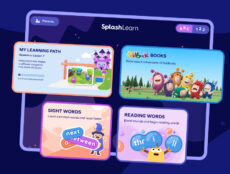
Articles
Op-Ed
How Scheduling Software Can Help Parents Cope with Hybrid Learning at Home
By Matt Fairhurst
September 23, 2020
The debate about returning to the classroom in-person has been ongoing ever since schools pivoted to online courses at the onset of the pandemic. Remote learning has allowed education to continue during lockdowns. But for communities not accustomed to the modality, it proved a burdensome solution for some teachers, school administrators, kids, and most of all, their families. Overnight, parents who were previously minimally involved in the 8am-3pm school day, were asked to take on the roles of learning facilitator and de facto IT support. These primary caregivers must ensure their child is accessing their daily lessons and staying on-track in a hybrid learning environment, all while navigating their own daily responsibilities.
Lol thanks! I actually feel for the teachers and school systems. Even meeting the teachers today was hectic and planning for this year has had to be extremely difficult. Especially with hybrid learning plans. Constant parent communication. Gotta give it up to them too for sure.
— g (@grstwo) August 19, 2020
As students have returned to school this fall, many have done so in districts using hybrid learning arrangements. Hybrid learning is a broad term that simply means having a mixture of in-person and virtual schooling. In the pandemic, this also involves limiting the size of classrooms to follow social distancing. Each institution accomplishes hybrid learning differently; some will assign different days of the week for in-person learning by grade, letter of the alphabet or on a voluntary basis. Depending on the day of the week, some classes occur 100% virtually, 100% in-person or a mixture — taught in-person to some and live-streamed to the rest. This model gives parents a break in their caretaking duties, allowing them to focus on work, chores, errands or simply have some quiet time alone.
Parents Are Still Struggling to Deal With Hybrid Learning at Home
Hybrid learning, while great in theory, brings its own set of organizational challenges. Certainly there are plenty on the school administrative side, but it can also be an additional burden placed on the families. What days does my child go into school? How do I ensure they keep themselves and others safe? Where do they go if I can’t pick them up right after class ends? What if we have an immunocompromised family member in the household? Families, students and school faculty can’t afford the consequences if executed incorrectly. The best-case scenario is some disorganization and confusion, while the worst-case scenario could be a small epidemic.
To make hybrid learning a viable option, schools need sophisticated yet easy-to-use technology that keeps things safe and organized, all while simplifying the lives of parents, not making them more complicated. One such emerging technology is high-capacity based scheduling. It is currently being used to schedule and coordinate the contactless COVID-19 testing process for thousands of people daily, including testing players in three professional sports (MLS, NBA and NFL). The software automatically and intelligently helps organize large quantities of people to minimize contact and capacity using appointments. It has the ability to remember personalized settings, send reminders and generate QR codes.
The Capacity of Scheduling Software to Parse a Shifting School Week
This technology has many applications that can be applied to a hybrid learning environment, helping to minimize the burden of a child’s education on the day-to-day lives of parents. The primary purpose would be scheduling students for in-person school attendance. Using this type of smart solution, hundreds or thousands of families can indicate their individual preferences and be instantly scheduled, taking into account the school’s total capacity. Let’s say both of Sophia’s parents have to go to the office and can’t watch her on Wednesdays, high-capacity based scheduling will know to schedule Sophia for in-person class on Wednesday. Or, if the family decides they are uncomfortable sending their child to in-person classes altogether they can opt-out for the time-being, revert to entirely virtual classes and readmit when ready. As the situation regarding COVID-19 continues to evolve, it’s important to give parents flexibility and control over their child’s learning and any in-person activities.
My kids were home all spring for a hectic virtual end of school. My kids are masking/social distancing/hybrid scheduling/quarantining/virtual learning for school this fall, and Trump knew in February it was going to be bad, but instead told everyone it would be gone by Easter.
— Nick (@director_dad) September 10, 2020
This technology also has plenty of less-obvious, but also entirely necessary use-cases, like coordinating drop-off times, sports’ practices and games and teacher office hours. For example, parents may opt-in for their child to receive teacher or peer tutoring. They can indicate their child’s availability, special needs that need to be accommodated, the subject and any other relevant criteria. It can take all of these preferences into account and match them up to an appropriate tutor, remembering this information in perpetuity while helping maintain consistency throughout the student’s education. And to top it off, the solution can keep all informed via text messages, email alerts or a centralized website.
As new information becomes available regarding COVID-19, new challenges will certainly come to light. But hybrid classrooms enabled by strong back-end technology, such as high-capacity based scheduling, could be part of the solution for the upcoming school year. It empowers parents and schools to confidently explore the option of a partial return to in-person learning. The benefits include better student engagement and the preservation of parents’ sanity, all while following CDC guidelines and maintaining safe social distancing. High-capacity scheduling software shows that innovative technology solutions can and should be part of the answer to getting in-person education, and a sense of normalcy, back on schedule.
 Matt Fairhurst is the CEO of Skedulo.
Matt Fairhurst is the CEO of Skedulo.
Featured Image: Marcus Spiske, Unsplash.









No Comments